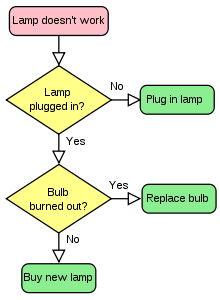BSIT FIRST SEMESTER
my dear friends i'll try my best to help you in our study i'll give you day to day updates related from BSIT subjects and fully of our study and our university petrun hope you get the best.
Popular Posts
Monday, October 24, 2011
Tuesday, October 11, 2011
Monday, December 6, 2010
Guyz download the full Book Name : Discovering Computers 2011: Complete (Shelly Cashman
Course Technology | 2010 | ISBN: 1439079269 | File type: PDF | 920 pages | 125.58 mb
Discovering Computers 2011: Complete, provides learners with a current and thorough introduction to computers by integrating the use of technology with the printed text.
Discovering Computers 2011: Complete, provides learners with a current and thorough introduction to computers by integrating the use of technology with the printed text.
TO DOWNLOAD FOLLOW THIS LINK:
http://hotfile.com/dl/80358487/04f7811/1439079269disc.rar.html
Friday, November 26, 2010
What is the Internet? computer science's 2nd lecture
- INTERNET
The Internet is a global system of interconnected computer networks that use the standard Internet Protocol Suite (TCP/IP) to serve billions of users worldwide. It is a network of networks that consists of millions of private, public, academic, business, and government networks, of local to global scope, that are linked by a broad array of electronic and optical networking technologies. The Internet carries a vast range of information resources and services, such as the inter-linked hypertext documents of the World Wide Web (WWW) and the infrastructure to support electronic mail.
- Explanation
- Most traditional communications media including telephone, music, film, and television are being reshaped or redefined by the Internet. Newspaper, book and other print publishing are having to adapt to Web sites and blogging. The Internet has enabled or accelerated new forms of human interactions through instant messaging, Internet forums, and social networking. Online shopping has boomed both for major retail outlets and small artisans and traders. Business-to-business and financial services on the Internet affect supply chains across entire industries.
- History
- The origins of the Internet reach back to the 1960s with both private and United States military research into robust, fault-tolerant, and distributed computer networks. The funding of a new U.S. backbone by the National Science Foundation, as well as private funding for other commercial backbones, led to worldwide participation in the development of new networking technologies, and the merger of many networks. The commercialization of what was by then an international network in the mid 1990s resulted in its popularization and incorporation into virtually every aspect of modern human life. As of 2009, an estimated quarter of Earth's population used the services of the Internet.
Introduction of Algorithms

In mathematics, computer science, and related subjects, an algorithm (derived from the name of mathematician al-Khwārizmī) is an effective method for solving a problem expressed as a finite sequence of steps. Algorithms are used for calculation, data processing, and many other fields. (In more advanced or abstract settings, the instructions do not necessarily constitute a finite sequence, and even not necessarily a sequence; see, e.g., "nondeterministic algorithm".)
Each algorithm is a list of well-defined instructions for completing a task. Starting from an initial state, the instructions describe a computation that proceeds through a well-defined series of successive states, eventually terminating in a final ending state. The transition from one state to the next is not necessarily deterministic; some algorithms, known as randomized algorithms, incorporate randomness.
Subscribe to:
Comments (Atom)


